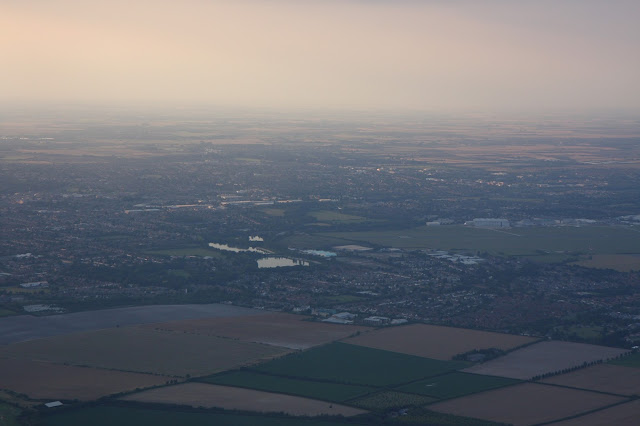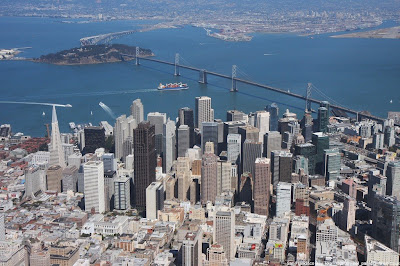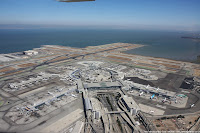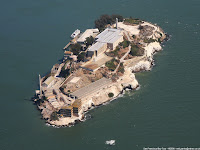
Flights 65, 67 and 68 have been with my instructor Patti to get me checked out in the 180HP
Cessna 172SP Skyhawk. I thought I would write some notes into my blog detailing the things I've learned, and the differences between this and the other Cessnas I've flown (C152 and C182). Pictured left
N668TW, a 2002 model in great condition and the 172SP I've flown the most.
The 172SP is the latest in the long line 172's, see the wikipedia page for more info on differences:
http://en.wikipedia.org/wiki/Cessna_172.
The most common Cessna's you will see at West Valley and other flying clubs:
- C152 - 110HP, the compact 2 seat trainer I did most of my private pilot license in
- C172N, M etc - 1970's, 160HP, standard carburetor (carb heat control)
- C172RG - Retractable Gear, therefore a little specialist and used as a complex trainer
- C172S (aka SP) - 1998 onwards, 180HP, fuel injected engine, fixed pitch prop
- C182T - 230HP, fuel injected, High Performance, variable pitch 3 bladed prop
- Note C172 and C182 also have G1000 options, labeled as C172SG1 and C182G1 (or G1000).
As you can see from the list, the C172SP is in the middle of the range, in many ways the modern SP has a lot of similarities to the C182, the big difference being a little smaller, lower power and without the variable pitch prop. I have flown most of my hours in the small C152, but more recently over 17 hours in a C182G1000 during some fly out group events with the club. After all the c182 hours I felt at home in the 172SP, there are a lot of similarities. The sections below detail the highlights and key differences with this plane.
Fuel and loading - 100 and 100LL, 53 gals max usable
The fuel selector can be switched between L, R and Both. In addition there's a small red Fuel Cutoff Valve just above it. (The 152 has just a fuel on/off, the 182 has a selector which can switch adds a off position). Fully loaded it can carry 53 usable gallons which can take you 512 NM (at 75% power, 6500 ft, 45 min reserve). Typically though the plane will be fueled to the tabs which is 35 usable gallons, and this gives you more room for passengers and baggage. Talking of weight and balance, with typical fuel (35 gal) N669TW can carry 619 lbs of pilot, passengers and baggage. Of course you need to perform a detailed W&B but that's approximately 4 people of 154 lbs and no baggage, or 2 people with lots of room for camping gear!
Priming and starting - much like the 182T, and unlike the 152 and older 172's there's no manual priming pump. Instead use the electric pump, push the mixture to full to the count of 3, then to lean to the count of 3. Waiting for the fuel flow gauge to show a reading will often over prime which can lead to backfires on starting.
Starting is like the 182, turn over, on firing push in the mixture to rich, THEN adjust throttle, before leaning the mixture for peak RPM.
Carb Heat and alternate air - the 172SPs (and 182Ts etc) don't have a carburetor, but instead have fuel injection. Therefore there's no Carb Heat control, and the alternate air intake is automatic by means of a spring loaded flap.
Rudder - there's no rudder trim on the 172, so every climb is a workout for your right leg! (the 182 has a rudder trim which is set for take off, and needs adjusting as you move to cruise). I had to remember to keep looking at the turn coordinator to check I was pushing the rudder enough.
 Avionics
Avionics - COM, GPS, ADF etc
There are a few more black boxes to play with than the 152! It's great to have 2x COM (radio) units, which can often be setup so you can listen to both, e.g. NORCAL and ATIS. Many planes also have an Auto Pilot.
[picture right shpes top to bottom, L to R: Audio Panel, Audio panel, Map screen, GPS, COM/NAV 1, Auto Pilot; COM/NAV 2 and Transponder].
Autopilot (AP) - The non-G1000 models have a range of different autopilot setups. Typically it will be a KAP140 AP hooked up to a GPS which may have an additional map screen. Single axis AP controls the heading only, dual axis controls altitude and adds a MET (Manual Electric Trim). The AP can be disabled by it's on-off button, the red button on the yoke, and the pullable circuit breaker.
Key points to note about the AP:
- Make sure the GPS receiver is enabled (you may need to 'OK' a number of messages)
- Separate MAP screen (if included) is just a slave device to the GPS unit, you cannot use it to Flight Plan etc.
- KAP140 pre-flight includes turning it on during run-up to check it can be overpowered and turned off.
- KAP140 has it's own static port, and barometer (BARO) setting
- When first powered up the AP will be in ROL mode which will hold heading and altitude
- HDG (Heading mode) will command the autopilot to turn to the direction selected by the Heading Bug (see extra marker and control on the Heading Indicator)
- NAV (navigation mode) will command the AP to follow the planned GPS route (which should be setup before you press the NAV button ;)
 Instruments
InstrumentsThe basics are the same, altitude, attitude, heading, airspeed, tach, vor, turn coord etc.
The differences and additions include two VOR receivers, an electronic VOLTS/AIR TEMP/TIMER display, fuel flow gauge and exhaust gas temp gauge.
Landing
It took me a little while to perfect the landings, in all we practiced 17 landings between Palo Alto and Half Moon Bay. The biggest difference with the 152 is the view of the runway through the windshield, and getting a feeling for what's straight and centered. I found the line of rivets on the bonnet needs to be lined up just right of the runway center line.
The other difference is the flaps and speeds in the pattern. From key point at 800 AGL to landing the plane seems most happy around 1500 rpm, 75 knots downwind, 70 base and 65 final. On short final the landing is most effective if you start pulling back on rpm as you enter ground effect, aim for idle just past at the end of the run way.
Engine out landings
Remember 68 KIAS fully loaded, and 59 KIAS at 1900 LBs.
The full flaps (30 degrees) are VERY effective, and for a power off landing they really cause the plane to drop so hold off unless you're high, or you're sure you'll make the runway.
Flying! Flying is of course the fun bit! It's certainly got a lot more power than a 110HP 152, an you really need to push the right rudder to compensate for the P-factor in the climb. When it's in the air it's a very stable, smooth and powerful. It likes to climb, it likes to keep its speed. Slow flight, stalls and the like put it out of it's comfort range, you'd have to do something really wrong to get this to stall!
During the 3 flights I did for the checkout the first was a short flight over the bay area one very cloudy (FEW040, SCT060?) and turbulent afternoon working on some maneuvers, and getting used to the plane. The second took us over to Half Moon Bay (a very clear day at the coast for a change, and a very empty HAF). And the third was just some pattern work before colorful sunset to perfect those landings. There's never a bad day to fly in the bay area ;)
If you're a pilot looking to flying a 172SP I hope this info is useful!
Neil.

 The plane is an Ikarus C42 microlight (or 'ultra-light' in the US), similar in size to the Cessna 152 I've flown but much lighter with wings covered in a kevlar composite material. The instruments and engine controls are simpler, no carb heat or mixture, no attitude or heading indicators, it's designed for daytime VFR flight only. The aileron and elevator is controlled by what's best described as a joystick in the center between pilot and passenger, no dual controls on this one though both seats do have their own rudder pedals and throttle.
The plane is an Ikarus C42 microlight (or 'ultra-light' in the US), similar in size to the Cessna 152 I've flown but much lighter with wings covered in a kevlar composite material. The instruments and engine controls are simpler, no carb heat or mixture, no attitude or heading indicators, it's designed for daytime VFR flight only. The aileron and elevator is controlled by what's best described as a joystick in the center between pilot and passenger, no dual controls on this one though both seats do have their own rudder pedals and throttle.
 Next we headed south past Granta Park, towards Saffron Waldon coming close to Stansted airspace. David uses an Android Tablet loaded with Skydemon software to give him a moving GPS map with visualization for air space and live NOTAM (notice to airmen). It also allows you to plot follow a flight plan. Looks like a really useful application!
Next we headed south past Granta Park, towards Saffron Waldon coming close to Stansted airspace. David uses an Android Tablet loaded with Skydemon software to give him a moving GPS map with visualization for air space and live NOTAM (notice to airmen). It also allows you to plot follow a flight plan. Looks like a really useful application!














